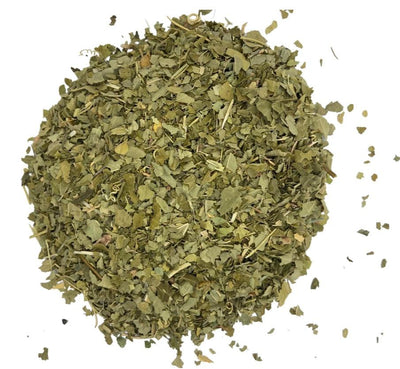The Complete History of Tea
A Steamy Story: The Complete History of Tea
Tea. A humble leaf that has, over thousands of years, sparked empires, inspired ceremonies, and soothed souls from Beijing to Birmingham. Whether it’s a builder’s brew in a chipped mug or a delicate silver needle steeping in porcelain, tea is far more than a drink—it's a cultural force, a social ritual, and, let's be honest, an essential part of life.
But where did it all begin? And how did this single plant, Camellia sinensis, find its way into nearly every corner of the world?
Put the kettle on and settle in. Here’s the complete history of tea—sip by sip.
The Mythical Origins: A Leaf in the Wind
Let’s travel back—way back—to ancient China, around 2737 BCE. Legend has it that Emperor Shen Nong, a skilled herbalist and somewhat of a culinary daredevil, was boiling water when a few stray leaves from a nearby bush fluttered into his pot. Curious, he tasted the infusion. The result? A surprisingly pleasant drink—and the accidental birth of tea.
Of course, no one was taking notes back then, so we can’t verify this story. But we do know that tea’s roots are firmly planted in Chinese soil. By the Shang dynasty (around 1600–1046 BCE), tea was being used in medicinal brews, and by the Han dynasty (206 BCE – 220 CE), it was already a household habit among the elite.
Tang Dynasty: The Real Tea Party Begins
Tea’s big glow-up happened during the Tang dynasty (618–907 CE). This is when tea drinking morphed from a medicinal curiosity into an art form—and a booming industry.
Lu Yu, known as the “Sage of Tea,” penned The Classic of Tea (Cha Jing) around 760 CE, the first definitive work on tea culture. He wasn’t just a fan of the drink; he was a tea philosopher. Lu Yu elevated tea to a spiritual and aesthetic experience, detailing everything from water quality to the ideal teapot. To him, tea wasn’t just a beverage—it was a path to inner harmony.
During this period, tea spread beyond China’s borders. Buddhist monks carried tea into Japan, where it would eventually blossom into the ceremonial marvel we now know as the Japanese tea ceremony.
Japan and the Zen of Tea
In Japan, tea found fertile ground—both literally and metaphorically. The Japanese quickly adopted tea, initially as a meditative aid for monks, thanks to its calming-yet-stimulating effects. But it didn't stay confined to monasteries for long.
By the 12th century, tea culture in Japan took on a highly ritualised form known as chanoyu—the Way of Tea. Ground matcha was whisked into a frothy brew in carefully choreographed ceremonies that celebrated mindfulness, simplicity, and seasonal beauty.
It was less about quenching thirst and more about nourishing the soul. Every movement, every silence, every sip had meaning.
Tea Heads West: The Silk Road and Sea Routes
While China and Japan were perfecting the poetry of tea, the rest of the world was just starting to catch the scent.
Thanks to the Silk Road and maritime trade routes, tea began making its way westward. Arab traders may have encountered it as early as the 9th century, and by the 17th century, Europeans were hooked. But not without a few hiccups.
Tea in Europe: From Exotic Rarity to National Obsession
Tea first reached Europe via Dutch and Portuguese traders in the early 1600s. At first, it was a luxury item, sold in apothecaries as a medicinal tonic. But word spread quickly. Soon, the wealthy were slurping their new exotic treasure with pride—and a dash of smugness.
England, however, deserves a special mention. The British didn't just adopt tea; they formed a lifelong relationship with it.
Catherine of Braganza, a Portuguese princess who married King Charles II in 1662, is often credited with kickstarting England’s tea craze. A tea lover herself, she brought her refined tea habits to court, and the trend trickled down to aristocrats and merchants before eventually filtering through all levels of society.
By the 18th century, tea was England’s national beverage. It was fashionable, it was sociable, and it was taxed to the hilt—leading to some rather famous consequences across the Atlantic…
The Boston Tea Party: Brewing Revolution
It’s impossible to talk about the history of tea without mentioning the Boston Tea Party of 1773. Tensions had been bubbling between Britain and its American colonies over taxes, including those on tea.
When the British East India Company (which held a monopoly on tea imports) tried to undercut local merchants, a group of colonists—disguised as Mohawk warriors—boarded ships and dumped 342 chests of tea into Boston Harbour.
The message was clear: No taxation without representation. The incident helped spark the American Revolutionary War and made tea a symbol of both oppression and rebellion, depending on which side of the ocean you stood on.
Ironically, after the war, many Americans switched to coffee out of patriotic principle. To this day, the U.S. remains more of a coffee nation—though iced tea and Southern sweet tea still hold sway.
India and the British Empire: A Colonial Cuppa
By the 19th century, Britain had a problem: they were mad for tea, but China controlled the market.
Enter the British East India Company again—this time with a scheme to break the monopoly. The British discovered that India’s Assam region had its own native tea plant (Camellia sinensis var. assamica), and they pounced on the opportunity.
Plantations were set up in Assam and Darjeeling, often under brutal conditions for local workers. Tea became a tool of empire—a lucrative cash crop exported back to Britain and around the world.
This era gave rise to the strong, malty black teas many of us associate with classic British blends today—like English Breakfast and Earl Grey (the latter allegedly flavoured with bergamot to mask low-quality leaves).
By the early 20th century, India was one of the largest tea producers in the world—and still is.
The Invention of the Tea Bag
Let’s fast-forward to a happy accident in the early 1900s. Thomas Sullivan, a New York tea merchant, began sending tea samples to clients in small silk bags. Some customers assumed the whole bag was meant to be steeped—and found it rather convenient.
And thus, the tea bag was born.
By the 1920s, tea bags were being mass-produced in gauze, then paper. They revolutionised tea drinking by offering speed and simplicity. Purists turned their noses up, but millions embraced the ease of a quick brew.
Today, tea bags account for the vast majority of tea sales in Western countries. They're efficient, but if you’ve ever tried loose-leaf, you know there’s no comparison when it comes to flavour.
Modern Tea Trends: From Matcha Lattes to Bubble Tea
Tea is always evolving. While black tea once reigned supreme, modern tea drinkers are branching out—literally.
Green tea, oolong, white tea, and pu-erh have surged in popularity, often hailed for their health benefits. Herbal infusions like chamomile, rooibos, and peppermint, though not technically tea, have also earned loyal followings.
And let’s not forget the fun stuff: Matcha lattes have gone mainstream. Bubble tea—with its chewy tapioca pearls—has become a global craze. Cold brews and sparkling teas are popping up in fridges everywhere.
Even traditional tea-drinking cultures are embracing the new. In Japan, tea sommeliers blend ancient knowledge with modern flair. In China, artisanal tea houses are reviving old-school brewing techniques for a younger crowd.
Tea as a Way of Life
What’s most fascinating about tea is how it means different things in different places:
-
In Britain, it’s a comfort ritual. "Fancy a cuppa?" is both an invitation and a balm for life’s daily dramas.
-
In China, it’s a connection to heritage, often enjoyed over long, slow sessions with friends.
-
In Japan, it’s meditation in motion.
-
In Morocco, it’s a gesture of hospitality—a sweet, minty welcome to guests.
-
In Tibet, it’s sustenance, with yak butter added to ward off the cold.
-
In India, it’s community—served in tiny glasses at street stalls where locals gather for chai and chatter.
So, Where Are We Now?
Today, tea is the second most consumed beverage in the world after water. It has shaped trade routes, sparked rebellions, founded empires, and inspired countless books, poems, and rainy-day musings.
And yet, for all its history, tea is still wonderfully simple. A few leaves, hot water, a little time. That’s all you need.
Whether you drink it strong with milk, green and grassy, or fruity and chilled over ice, tea remains a drink that brings people together. It bridges the gap between old and new, East and West, solitary moments and shared conversations.
So next time you brew a cup, take a second to appreciate the thousands of years it took to get from Shen Nong’s accidental discovery to your kettle. You’re not just drinking tea—you’re steeping in history.







